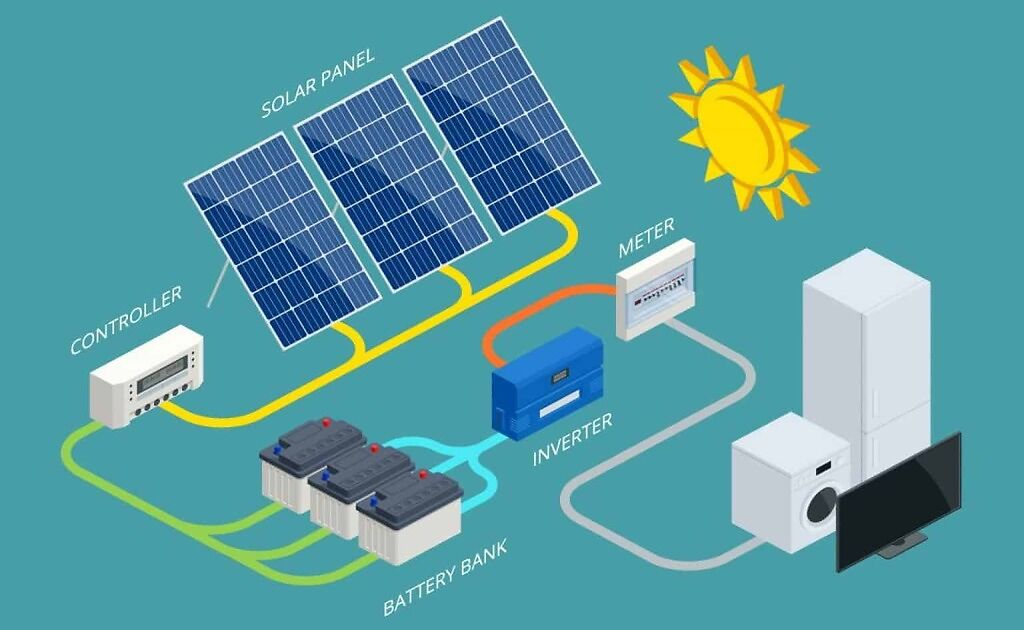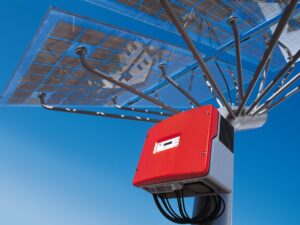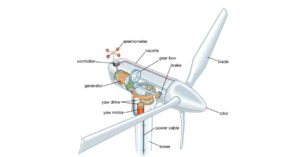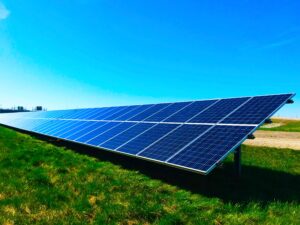This articles demonstrates the different types of PV systems and their operation.
- Grid-Tied or Utility Interactive PV Systems
- Off-Grid or Stand-Alone or Battery-Based PV Systems
- Hybrid PV Systems
- Grid-Tied-Battery-Backup or Multimodal or Bi-Modal PV Systems
- Direct-Coupled PV Systems
- Self-Regulating PV Systems
Grid-Tied or Utility Interactive PV Systems
Grid-tied PV systems connect directly to and synchronize with the utility. They are the most popular type of system. The size of the PV array determines the size of the inverter.
The main components of a utility-interactive PV system are:
- Solar modules
- Inverter (no batteries or chargers)
Grid-tied PV systems have to be able to disconnect from the grid whenever the grid is down or not within specifications. This is called anti-islanding and means that the inverter cannot operate alone as an island of power.
If a grid- tied system did feed the grid when the grid was down, it could be dangerous to utility workers who are fixing the problem. Some solar customers are surprised to find out that their utility-interactive PV systems will not work during a power outage.
Off-Grid or Stand-Alone or Battery-Based PV Systems
PV systems that work independent of the utility grid. Usually used for remote homes. Stand-alone PV systems are designed to fulfill all of the electricity requirements.
There are two basic types of stand-alone PV systems.
- AC Coupled Systems
- DC Coupled Systems
DC coupled systems are the most common and simple off-grid systems. Their main components are:
- Solar Modules
- Charge Controller (prevents battery over and under charging)
- Battery
- Inverter

AC coupled systems use two types of inverters: battery inverters to create voltage so that grid-tied inverters can work when there is no utility. Their main components are:
- Solar modules
- Grid-tied inverters
- Off-grid inverter/charger
- Batteries

Hybrid PV Systems
Hybrid PV systems include another source of power.
Typical other sources of power include:
- Generator (Internal Combustion Engine)
- Wind Turbine
- Micro-Hydro (Small Hydro Electric Turbine)
Grid-Tied-Battery-Backup or Multimodal or Bi-Modal PV Systems
Grid-Tied-Battery-Backup (GTBB) PV systems can operate as grid- tied systems and off-grid systems. They are typically the most complex systems to design.
The inverters will produce as much power as possible when operating in utility-interactive mode. When the utility is interrupted, the inverters disconnect from the grid and switch to stand-alone mode and make as much power as the loads require. (Loads are devices that consume electricity.)
Multimodal systems have to disconnect from the grid completely when the grid is down, but still have to feed power to the house. These systems usually power a subpanel of specific loads and not the entire house.
Direct-Coupled PV Systems
This is the simplest type of PV system. The only components are PV and a load (usually an electric motor).
A good example of a direct-coupled system is a solar attic fan. A solar attic fan consists of a PV module and a fan. When the sun is out, the fan works, when it is brighter, the fan works better, which is convenient, since we need a fan more when the sun is out.
Another common direct-coupled system is water pumping. In sunny times, more water is needed and water can be stored with elevation and used at night.
There are no direct-coupled lighting systems, since when the sun is out, the direct sunlight is the most efficient light.
Self-Regulating PV Systems
A self-regulating system is a stand-alone PV system without a charge con-troller. In most cases, not having a charge controller would damage a battery by under- and over-charging the battery.
According to the National Electric Code, a self-regulating PV system has to be designed so that it will not charge over 3 percent battery capacity in an hour. This way the battery will not be over- charged. Over-charging a battery can not only damage the battery, but also can split water molecules into hydro-
gen and oxygen, which is an explosive combination.
There are no safety issues with under-charging batteries, but as anyone with a car knows, letting a battery die is not good for the life of the battery, so self-regulating systems are designed with loads that are small relative to the size of the battery and PV, so that they can survive dark winter days.
A good example of a self-regulating PV system is a coastguard buoy, which has a big battery bank relative to a modest blinking light.




